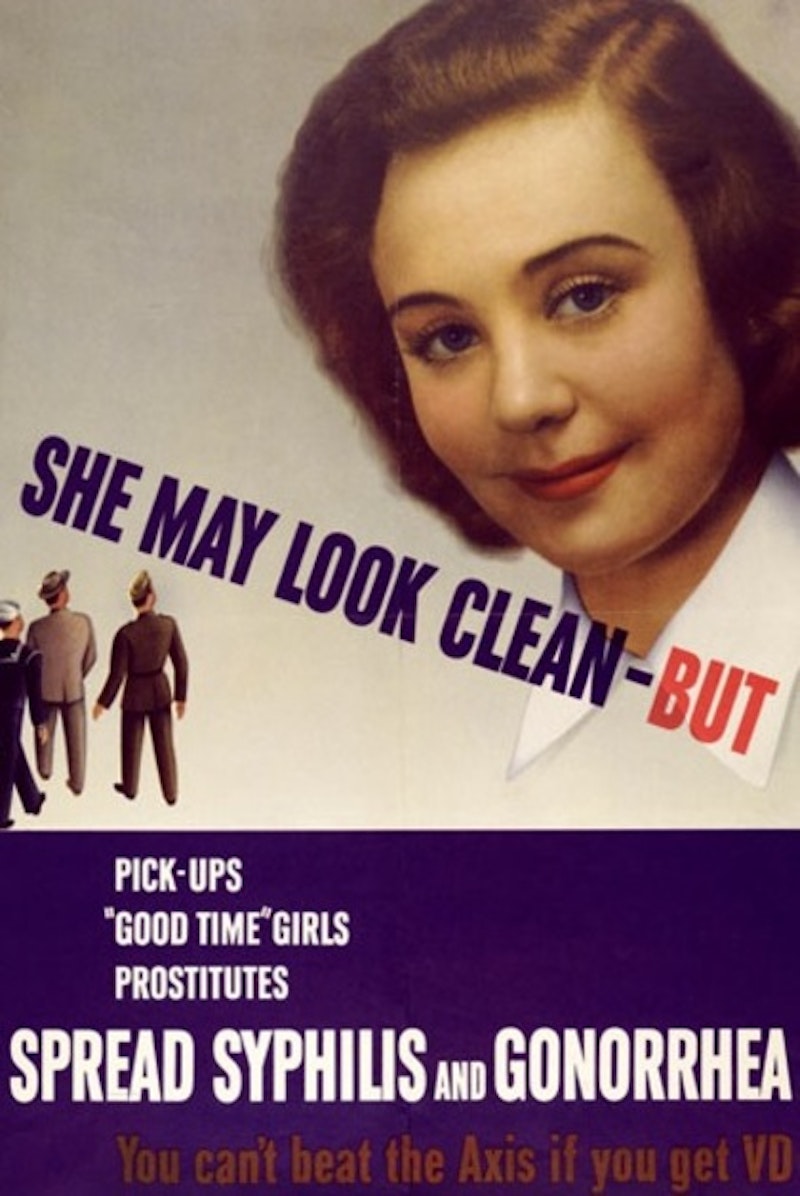The New York Times reported on March 12 that a National Health and Nutrition Examination Survey showed 25 percent of teenage girls in the United States have an STD. I suspect it was the first time that the phrase “irritating vaginal discharge” appeared on the front page of a major newspaper. Medical releases of this sort often warrant skepticism because of contemporary statistical overload, but the fact that this particular one appeared in such a high profile daily reflects how nervous our society is getting about the intimacies of kids’ sexual behavior. It’s unlikely that a quarter of teen females are actually walking around with an STD, it’s clear that suit-wearing professionals are concerned enough about youth sexuality that they’ll crunch numbers and produce a slanted survey to prove their point.
The consensus view would tell us that the reason for such a sexually gung-ho teen population stems from that very front page, which featured three different articles about Eliot Spitzer, whose own sexual habits cost him governorship of New York. Common sense would tell us that as long as VH1 is showing that guy from Poison trying to slay hookers with a big blonde wig on, or the check out line at Shaw’s blasts sex at us from all angles, this trend of increasing teen sexual activity will continue… because this supposed quarter of teenage girls has bought this Pop-Culture Hollywood Mad-House story of sex everywhere hook line and sinker.
But sexual activity is not really the issue here. The issue is disease. If this unorthodoxly graphic article in the Times is indicative of one thing, it’s that people are doing everything they can to inform the youth of this country about the abundance of diseases they might contract. Sex Ed is more prevalent now than ever—including commercials about genital herpes on Nickelodeon—and yet the number of STDs is still rising.
If it were a lack of education, or even the inundation of sexually explicit material found in the mass media, then it would be one tricky bastard to explain the remaining 75 percent of the teenage population that hasn’t gotten infected.
But it’s not tricky. Maybe these kids with herpes deserve some fucking herpes. Maybe that’s what’s coming to them. There’s an enormous bank of reliable sex-ed material available, and teenagers are over-informed by pop culture about sexual practices—and yet a quarter of all teenage girls are not attentive enough to any of the abundant sources on how to prevent STDs, many of which appear in the same media.
It’s hard to see why they would pay more attention, however. How can we hold people responsible for what information they embrace when the media’s presentation of a sex-crazed world is no more realistic or healthy than the bush-league scare tactics that educators release on a regular basis? Maybe this game of slanting reality in both pop culture and academia and government is breeding a younger generation of people who so stupefied that they don’t know what to believe at all.
Getting What They Deserve
Sex education is on the rise and teen STDs are still going up? Maybe the media should stop looking for easy explanations.

